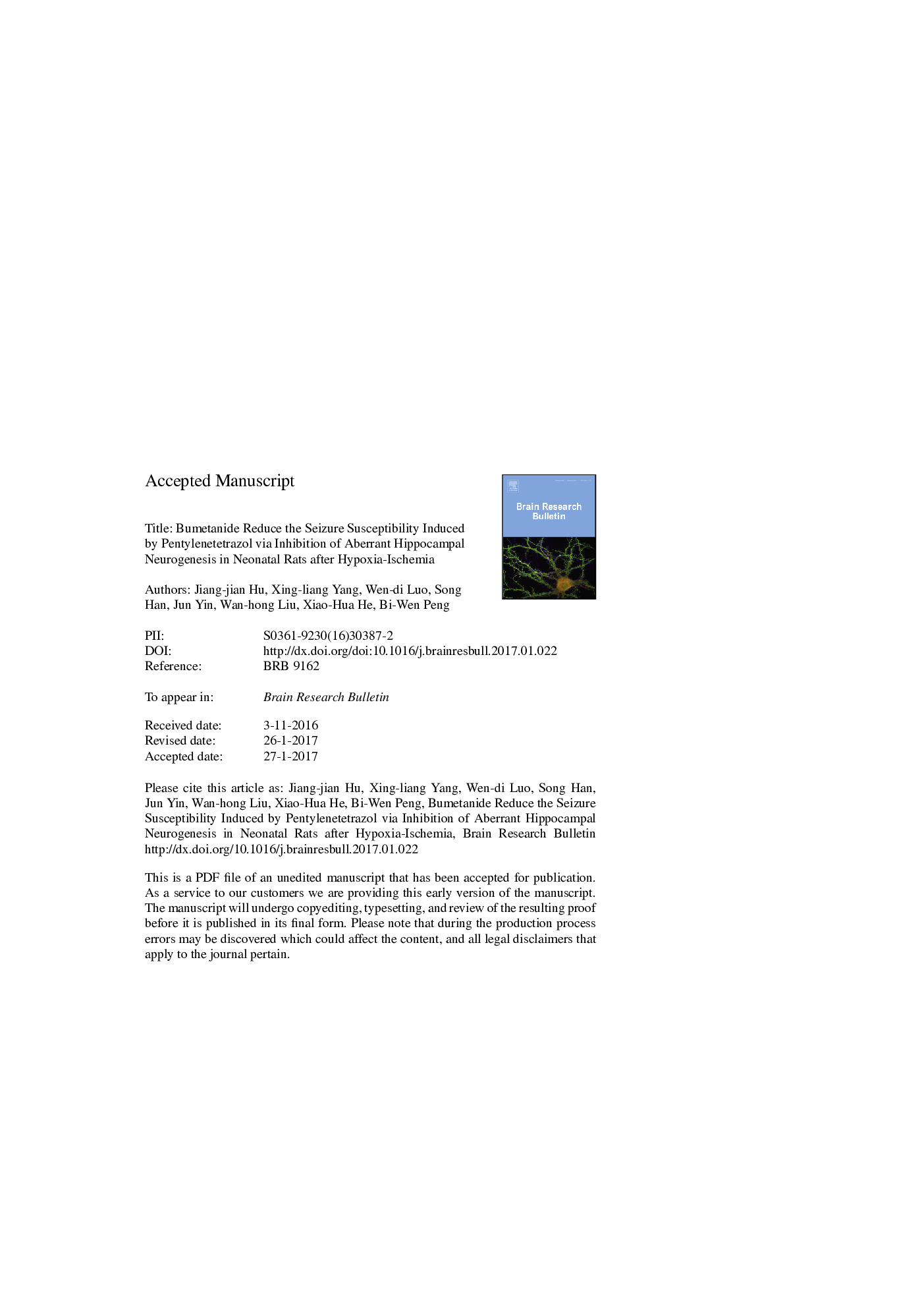| Article ID | Journal | Published Year | Pages | File Type |
|---|---|---|---|---|
| 5736378 | Brain Research Bulletin | 2017 | 36 Pages |
Abstract
Hypoxia-ischemia brain damage (HIBD) is one of prevalent causes of neonatal mortality and morbidity. Our data demonstrated that hypoxia-ischemia (HI) induced Na+-K+-Clâ-co-transporter 1 (NKCC1) increasing in hippocampus. Previous studies demonstrated that NKCC1 regulates various stages of neurogenesis. In this study, we studied the role of increased NKCC1 in regulating of HI-induced neurogenesis. HIBD model was established in 7Â days old Sprague-Dawley rat pup, and the expression of NKCC1 was detected by western blot and qPCR. Brain electrical activity in freely rats was monitored by electroencephalography (EEG) recordings. HI-induced neurogenesis was detected by immunofluorescence staining. Neurobehavioral test was to investigate the neuro-protective role of bumetanide, an inhibitor of NKCC1, on neonatal rats after HI. The results showed that bumetanide treatment significantly reduced brain electrical activity and the seizure stage of epilepsy induced by pentylenetetrazol (PTZ) in vivo after HI. In addition, bumetanide restored aberrant hippocampal neurogenesis and associated cognitive function. Our data demonstrated that bumetanide reduces the susceptibility of epilepsy induced by PTZ in rats suffering from HI injury during neonatal period via restoring the ectopic newborn neurons in dentate gyrus (DG) and cognitive function.
Related Topics
Life Sciences
Neuroscience
Cellular and Molecular Neuroscience
Authors
Jiang-Jian Hu, Xing-Liang Yang, Wen-Di Luo, Song Han, Jun Yin, Wan-Hong Liu, Xiao-Hua He, Bi-Wen Peng,
